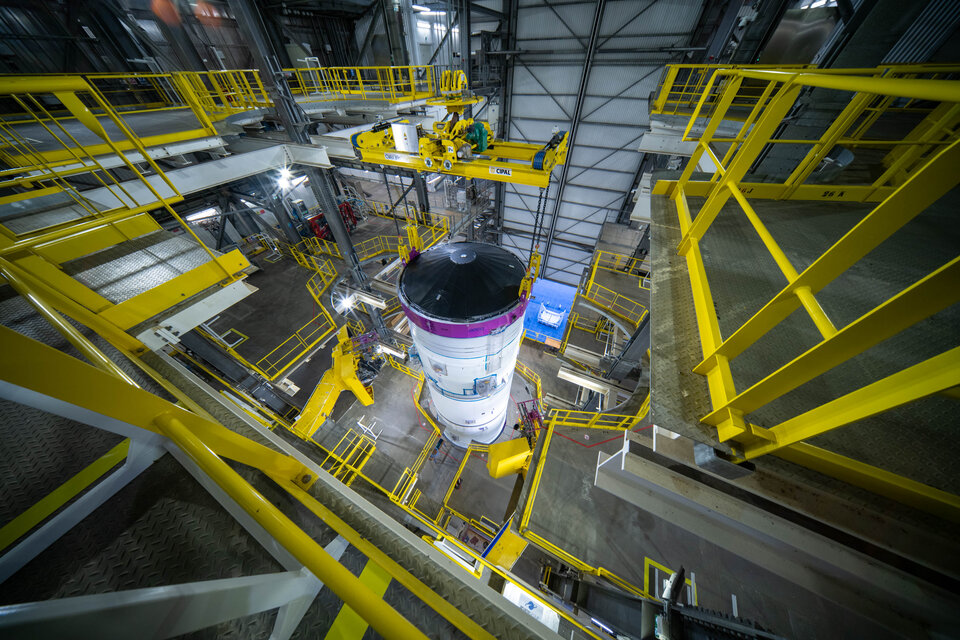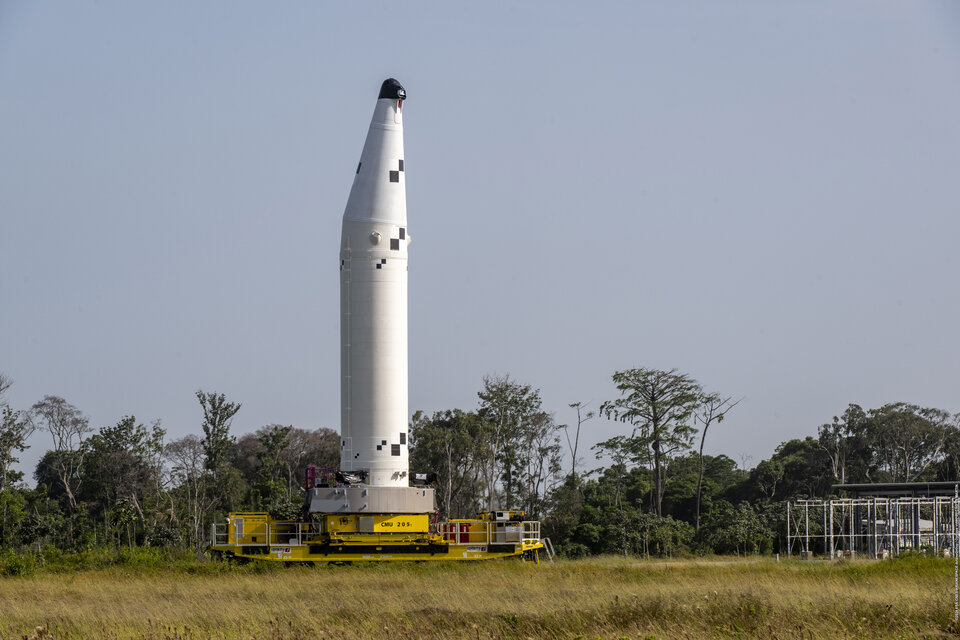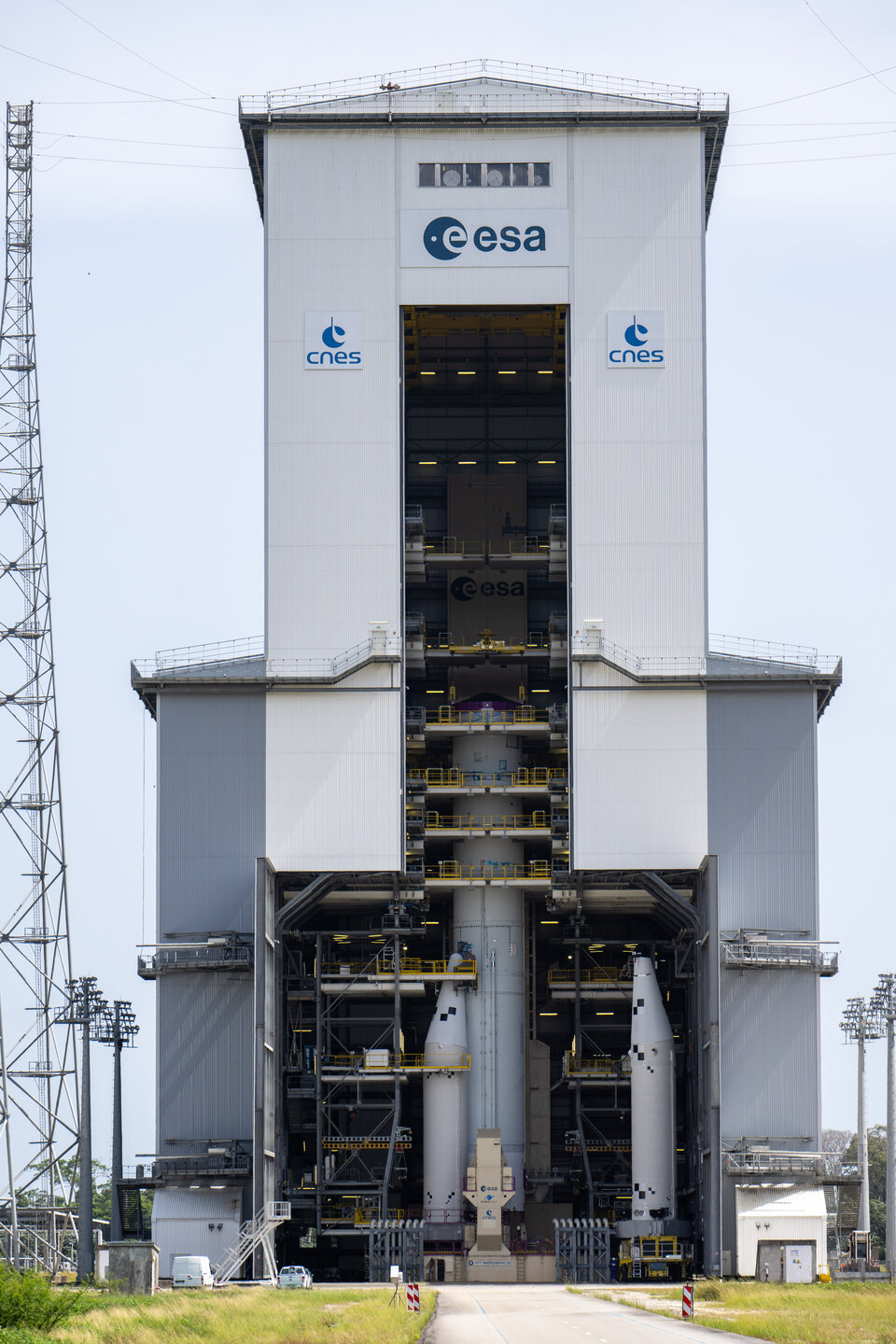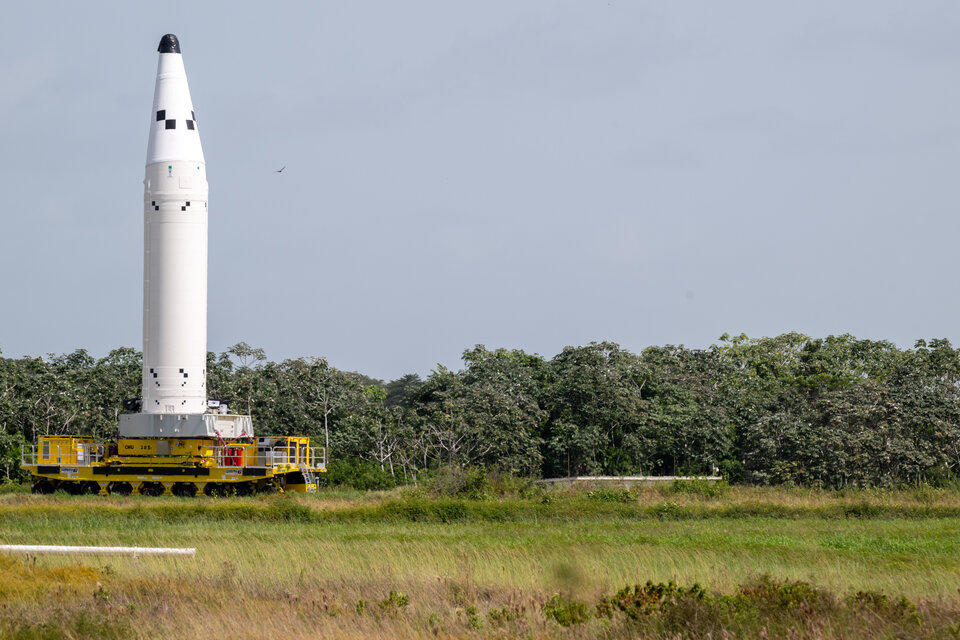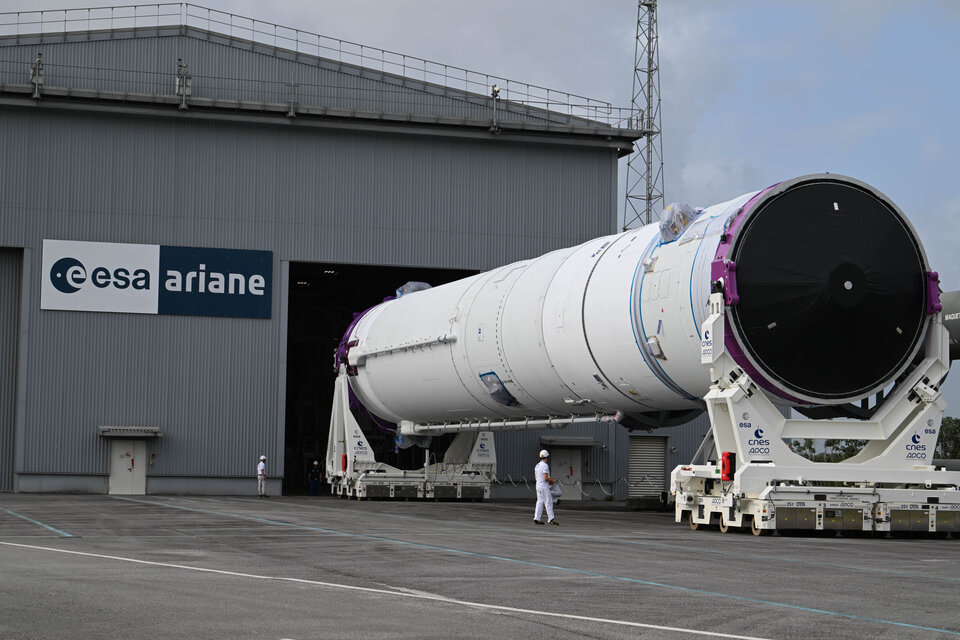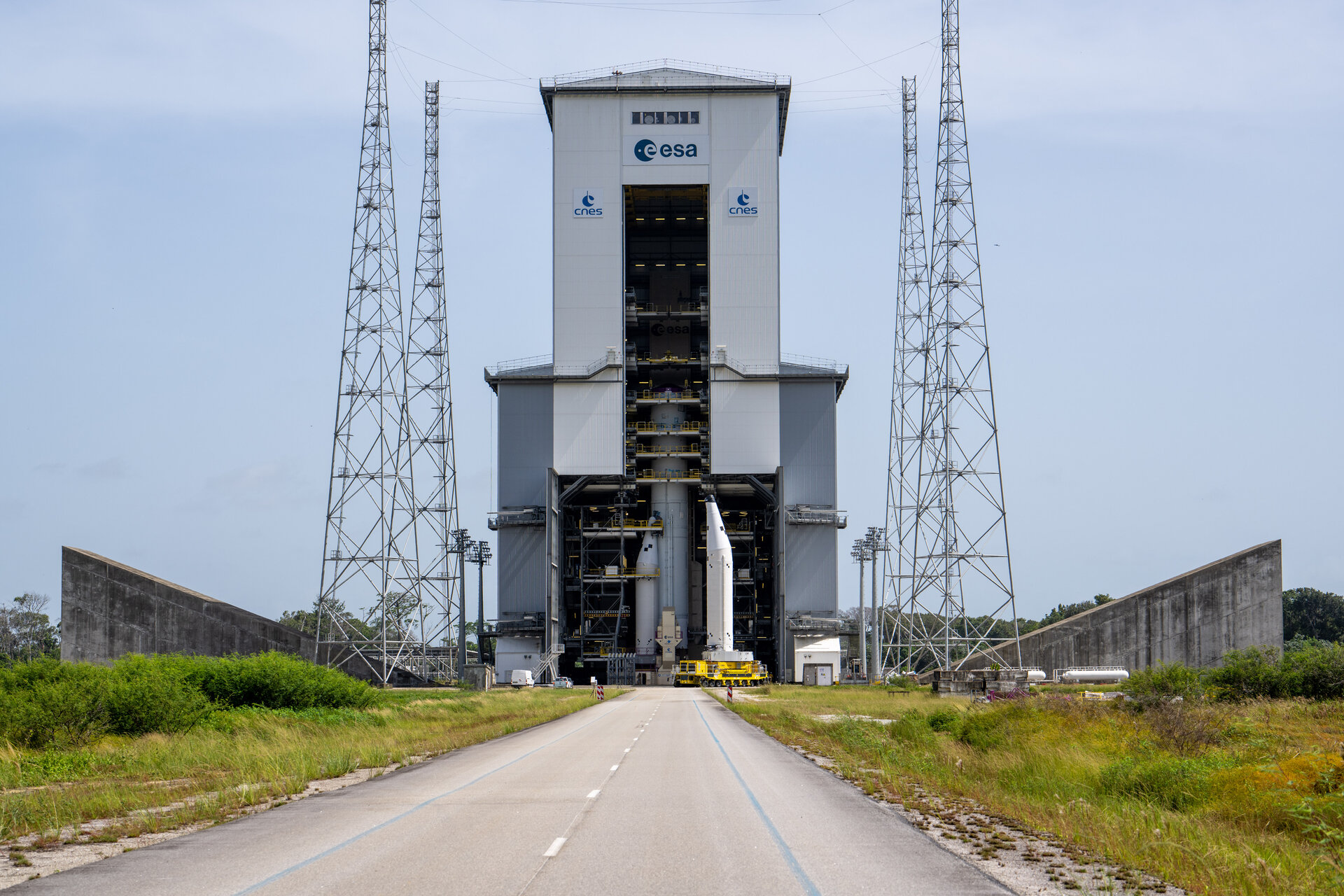
Europe is on the brink of a new era in space exploration with the inaugural launch of Ariane 6, a powerful and advanced heavy-lift rocket. The countdown to this historic moment began on April 24, 2024, as the central core of Ariane 6 was transported from the launcher assembly building to the ELA-4 launch complex in Kourou, French Guiana. This marked the start of Europe's first Ariane 6 campaign.
The Ariane 5 rocket had its last launch on July 5, 2023, ending a storied 27-year career as Europe's first heavy-lift rocket. With the arrival of Ariane 6, European sovereignty of access to space is once again possible. The new rocket aims to offer enhanced power and flexibility at reduced costs compared to its predecessor.
The central core, consisting of the main booster and upper stage, was installed on the launch table using a crane with a lifting beam. The two P120C solid rocket boosters were then transported to the launch pad on April 25 and 26. ESA, ArianeGroup, and France's space agency CNES teams delivered and installed the first Ariane 6 flight model on its launch pad.
Ariane 6 is designed as a two-stage rocket with a choice between configurations featuring two or four powerful boosters. It boasts an upgraded main stage, new restartable upper stage, and improved versions of the Vulcain 2.1 engine and newly-designed Vinci engine.
The first Ariane 6 mission will carry various payloads into low Earth orbit (LEO) and geostationary transfer orbit (GTO). One such payload is the OOV-Cube, a nanosatellite developed by the Technical University of Berlin and RapidCubes. The satellite measures 25-by-25 cm and will test a wide-angle camera with autofocus for future service missions to refuel, repair or re-orbit satellites.
Europe's spaceport in Kourou is preparing for an increased launch frequency, potentially achieving twelve missions per year. This ambitious goal underscores Europe's commitment to competing in the increasingly commercial space race dominated by players like SpaceX.
